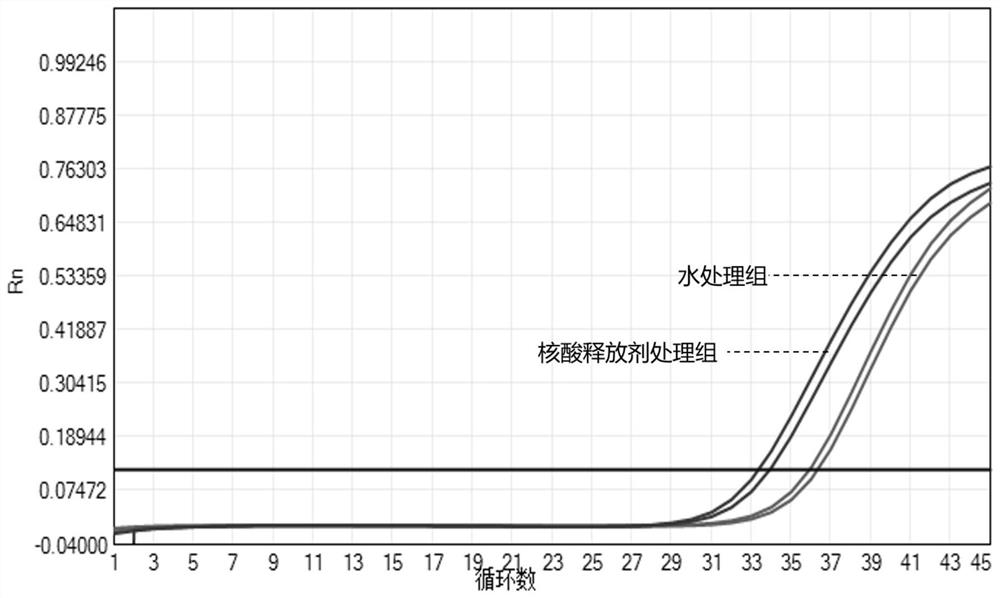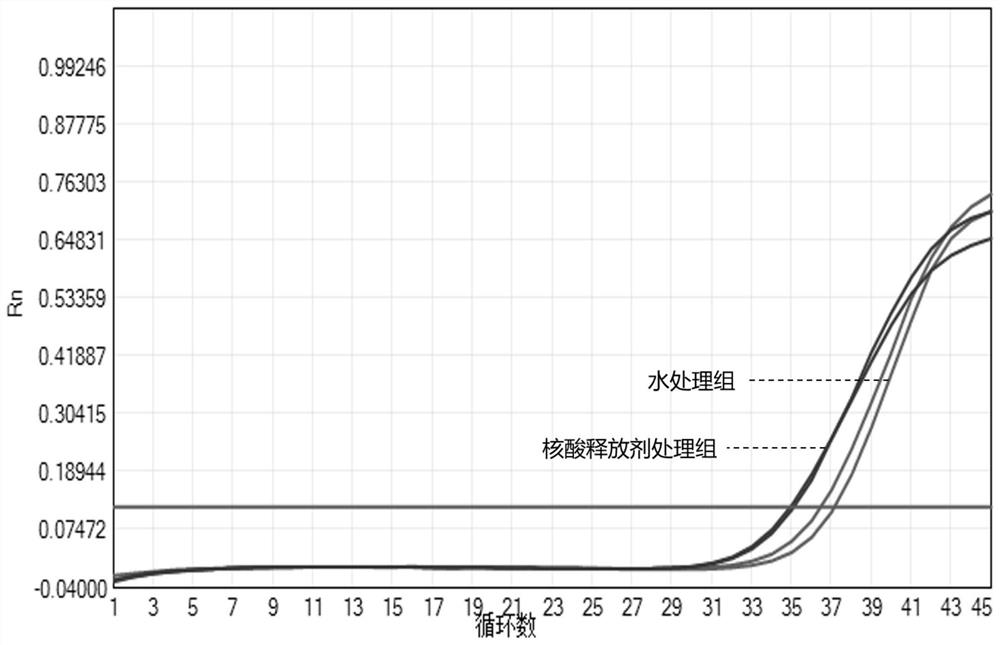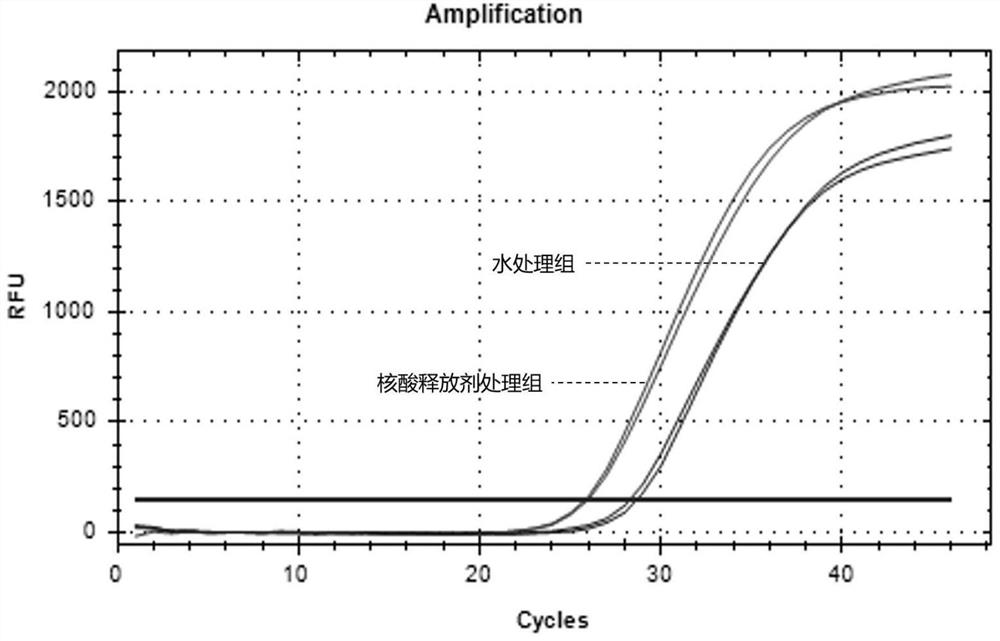Solid-phase particle material for treating biological sample and biological sample treatment method
A solid-phase particle, biological sample technology, applied in biochemical equipment and methods, microbial determination/inspection, etc., can solve the problems of time-consuming extraction steps, high reagent costs, complex steps, etc., and achieve high-throughput automated sample processing, The effect of saving materials and operating time, and inhibiting nuclease activity
- Summary
- Abstract
- Description
- Claims
- Application Information
AI Technical Summary
Problems solved by technology
Method used
Image
Examples
Embodiment 1
[0032] The preparation of embodiment 1 agarose solid-phase granular material
[0033] Take 100 mL of suspension of magnetic agarose carboxyl microbeads (purchased from Yingruicheng Biochemical Technology Co., Ltd.), suck off the supernatant, add 100 mL of 50 mM MES buffer (pH 5.0), stir well to suspend the microbeads. Continue to add 1 g of 1-ethyl-(3-dimethylaminopropyl) carbodiimide hydrochloride and 1 g of N-hydroxysuccinimide to the above solution, and stir thoroughly for 30 min. After the stirring, remove the reaction solution by magnetic suction and wash with water, continue to add 100 mL of MES buffer solution containing 1 g of iminodiacetic acid to the micro-beads, and stir thoroughly for 5 h. After the reaction is finished, the microbeads are washed with pure water to obtain the solid-phase granular material.
Embodiment 2
[0034] The preparation of embodiment 2 polystyrene carboxyl microbeads
[0035] Add 5 mL of styrene to a mixed solution of 70 mL of ethanol and 30 mL of water, then add 0.1 g of azobisisobutyronitrile, stir well, then raise the temperature to 70°C, and stir for 3 hours. After the reaction, the polystyrene microspheres were obtained by high-speed centrifugation, and washed several times with ethanol. Take 2 g of the prepared polystyrene microspheres, disperse them in 50 mL of tetrahydrofuran solution, add 1 g of succinic anhydride, 0.05 g of aluminum trichloride, stir and heat to 60 ° C for 9 h. After the reaction, the polystyrene carboxyl microbeads were obtained by high-speed centrifugation, and washed several times with ethanol.
Embodiment 3
[0036] The preparation of embodiment 3 polystyrene solid phase particle material
[0037] Take 100 mL of polystyrene carboxy microbead suspension, suck off the supernatant, and add 100 mL of 50 mM MES buffer (pH 5.0), stir well to suspend the microbeads. Continue to add 1 g of 1-ethyl-(3-dimethylaminopropyl) carbodiimide hydrochloride and 1 g of N-hydroxysuccinimide to the above solution, and stir thoroughly for 30 min. After the stirring was completed, the reaction solution was removed by centrifugation, and 100 mL of MES buffer solution containing 1 g of iminodiacetic acid was added to the microbeads, and stirred thoroughly for 5 h. After the reaction is finished, the microbeads are washed with pure water to obtain the solid-phase granular material.
PUM
 Login to View More
Login to View More Abstract
Description
Claims
Application Information
 Login to View More
Login to View More - R&D
- Intellectual Property
- Life Sciences
- Materials
- Tech Scout
- Unparalleled Data Quality
- Higher Quality Content
- 60% Fewer Hallucinations
Browse by: Latest US Patents, China's latest patents, Technical Efficacy Thesaurus, Application Domain, Technology Topic, Popular Technical Reports.
© 2025 PatSnap. All rights reserved.Legal|Privacy policy|Modern Slavery Act Transparency Statement|Sitemap|About US| Contact US: help@patsnap.com



